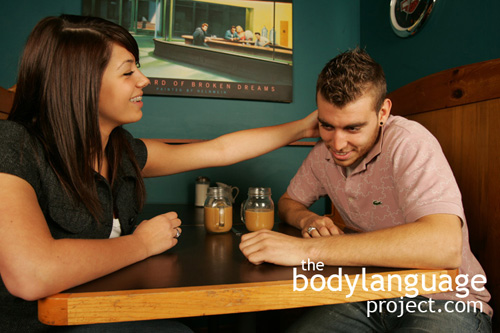
When no leader is present, the group will attribute leadership to whomever is sitting at the head of the table. Power trickles down from the head of the table toward the opposite end. Thus #1 has the most power, #2 the next most and so forth.
Not surprisingly, in studies looking at leadership, it was found that the most dominant person chooses the head of rectangular tables. Interestingly though, when no leader was present, leadership was attributed to the person who sat at the head of the table. Researchers Fred Strodtbeck and Harmon Hook in the early 1960’s found that during jury deliberations people at head positions tended to participate more often and had a greater influence on the decision making process, than people at the sides. This study overlooked whether or not leaders took up the positions though, but this is a likely assumption. However, in other studies it was found that a person’s status played a part in who chooses the head of the table. Those considered high class were much more likely than lower classes to sit at the heads of tables. Who knew money had anything to do with where we sit at a table!
Researchers attribute visibility and the ability to make eye contact with everyone as key features turning heads of tables into leadership positions. For example, one person sitting opposite three others would be seen as the leader, since they would be able to make eye contact with him, but not to each other. He would also be able to indicate his intentions better and therefore control the floor much easier. It should however be noted, that central positions at tables are also important in discussions since it permits ease of conversation amongst all participants through proximity. In other words, it’s hard to talk with someone from across the table, just imagine a “cartoonishly large” corporate sized boardroom! The exception to the head position as leader is when it exposes the back to the doorway. When this happens the head seat is a disadvantage since it leaves whomever open to surprise and attack.

When one person faces three, the person sitting by themselves are seen as the leader. His gaze is focused forward while his companions must head-turn to see and speak with everyone. In this case, #1 has the most power while each of the #2s share power.
Leadership shows a trickle down affect too. If the head of table is deemed the leader, than the person to their immediate side holds the next most powerful position, and so forth. In ancient times, the leader held the head of the table, with his lieutenants at his sides. The person who sits opposite the head, even today, is usually the most task oriented, whereas those sitting in the middle are usually affiliators, normally woman, who wish to interact with the greatest number of people and create active participation with everyone. Another feature of the Steinzor effect states that when a strong leader is present, people will direct comments to the person adjacent the leader more often because it avoids direct eye contact and confrontation with them, which is especially intimidating due to close quarters. When leadership was shared amongst all members, no strong patterns emerge and conversation basically happens freely.

